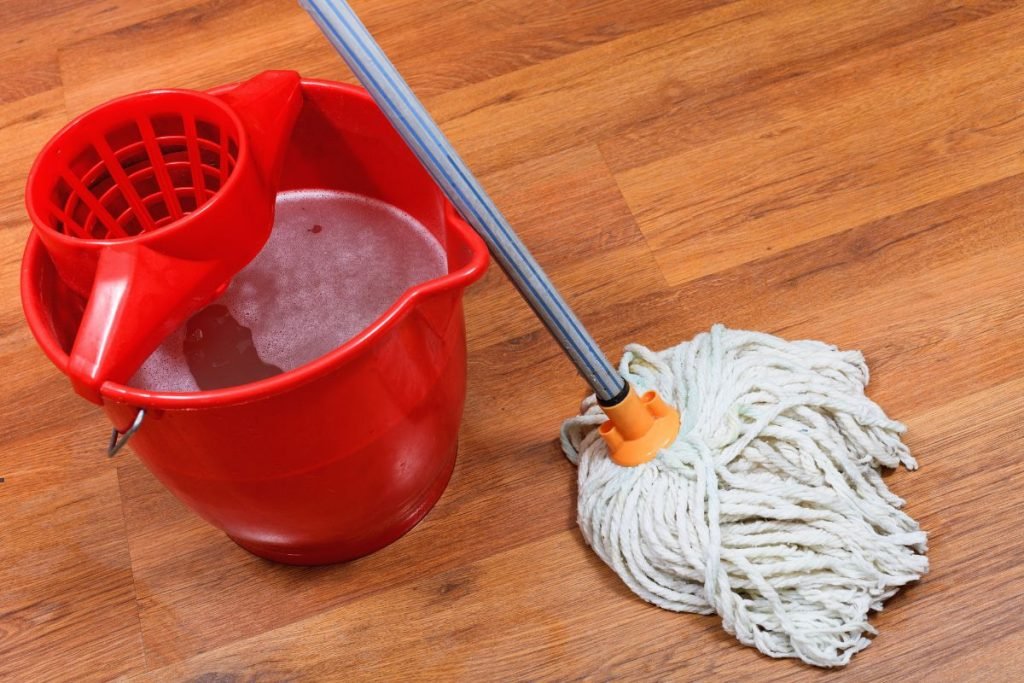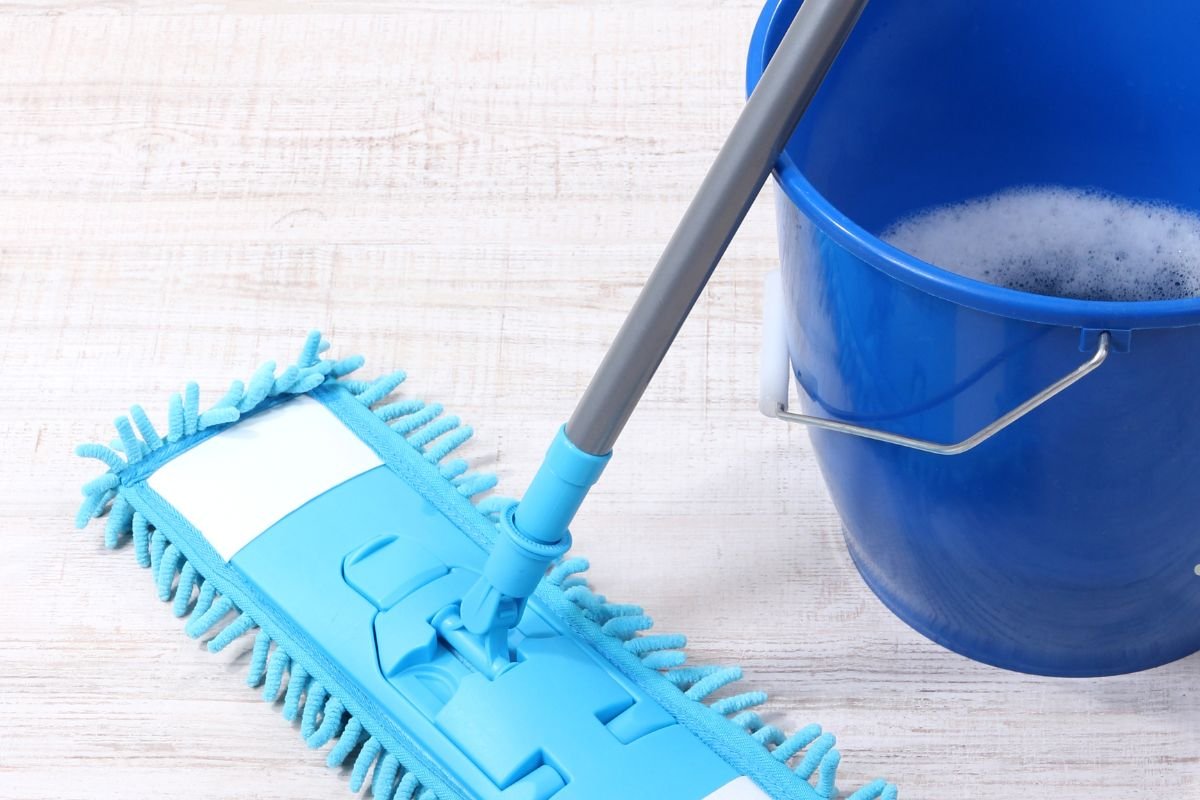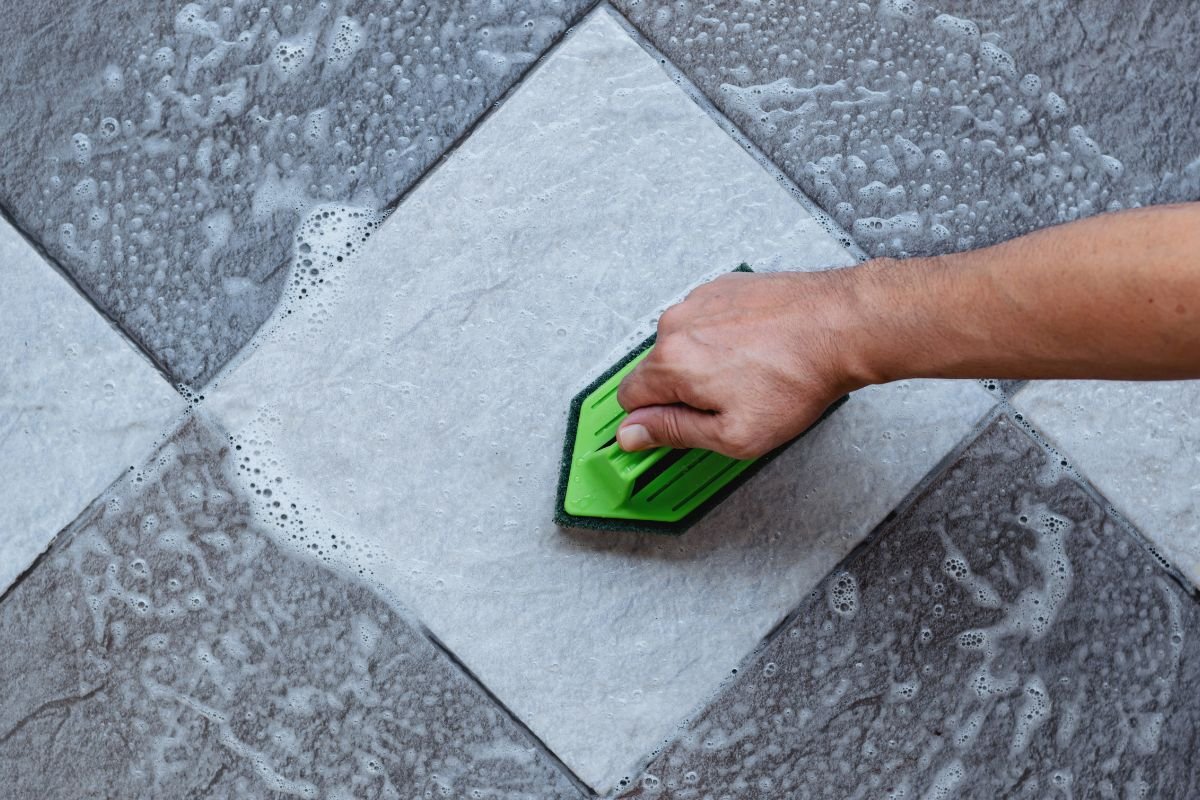
Ever wondered, “Is it OK to wash laminate floors with water?” You’re not alone. Laminate flooring is a popular choice for many homes, but its sensitivity to water can make cleaning tricky. Whether you’re dealing with everyday messes or tough stains, knowing the right techniques can save you from costly damage. In this guide, we’ll break down the dos and don’ts of cleaning laminate floors, so you can keep them looking great without any guesswork.
Key Takeaways
- Avoid using excessive water when cleaning laminate floors to prevent warping and damage.
- Opt for a damp mop instead of a wet one to control moisture levels.
- Quickly clean up spills to avoid moisture seeping into the flooring.
- Use cleaning solutions specifically designed for laminate or mild DIY mixtures like vinegar and water.
- Always dry the floor immediately after cleaning to prevent streaks or water pooling.
Understanding the Sensitivity of Laminate Floors to Water

Why Excessive Water Can Damage Laminate Floors
Laminate flooring, while durable and low-maintenance, is particularly sensitive to moisture. Excessive water can seep into the seams, causing the core material to swell or bubble. Unlike hardwood, which can sometimes be sanded and refinished, damaged laminate often requires panel replacement. To prevent issues, avoid soaking the floor or leaving puddles behind after cleaning.
The Role of Protective Coatings in Laminate Flooring
The top layer of laminate flooring is a transparent protective coating. This layer resists scratches, stains, and minor spills, but it’s not entirely waterproof. If the water penetrates this layer, it can reach the inner core, leading to swelling or warping. Using a damp mop instead of a wet one helps maintain this protective layer and extend the floor’s life.
How Moisture Affects Non-Waterproof Laminate
Non-waterproof laminate floors are especially vulnerable to moisture. Even small spills, if not cleaned up quickly, can lead to long-term damage. Over time, moisture can weaken the adhesive bonds between layers, causing the panels to separate or deform. For cleaning, stick to methods that minimize water exposure, such as microfiber mops or specialized laminate cleaners.
Safe Cleaning Practices for Laminate Floors
Using Damp Mops Instead of Wet Mops
When cleaning laminate floors, less is more when it comes to water. A damp mop is your best friend here. Over-saturating the mop can lead to water seeping into the laminate seams, which might cause swelling or warping. Make sure to wring your mop thoroughly before using it. Using a laminate floor mop, especially one with a microfiber head, can help you clean effectively without risking damage.
The Importance of Quick Spill Cleanup
Spills happen—it’s life. But on laminate floors, they need to be addressed right away. Liquids left sitting can penetrate the protective surface layer, leading to stains or even structural damage over time. Always have a microfiber cloth handy to blot spills quickly. For sticky messes, a lightly dampened cloth works wonders.
Choosing the Right Cleaning Tools
Not all tools are created equal when it comes to laminate flooring. Opt for soft-bristled brooms or dry microfiber mops to remove dust and debris. Avoid abrasive scrubbers or hard-bristle brushes, as they can scratch the surface. A vacuum cleaner with a hard floor setting is also a great option for quick cleanups. The right tools not only make cleaning easier but also help maintain the floor’s polished look for years to come.
Keeping your laminate floors clean doesn’t have to be a chore. Just remember: a little care goes a long way in preserving their beauty and durability.
Recommended Cleaning Solutions for Laminate Floors

DIY Vinegar and Water Mixtures
One of the simplest and most cost-effective solutions is a mix of white vinegar and water. Combine equal parts of distilled water and white vinegar in a spray bottle. For a pleasant scent, you can add a few drops of essential oil, like lavender or lemon. This mixture is great for cutting through grime while being gentle on your laminate floors. Just remember not to over-saturate the floor when applying it.
Commercial Cleaners for Laminate Flooring
If you prefer ready-made options, there are plenty of commercial cleaners specifically designed for laminate floors. These products are formulated to clean effectively without leaving streaks or damaging the protective layer of the laminate. For instance, Black Diamond Floor Cleaner is highly recommended for its versatility and streak-free finish. Always follow the instructions on the label for best results.
Natural Alternatives Like Tea-Based Solutions
For those who love natural alternatives, tea-based solutions can work wonders. Brew a few bags of black tea, let it cool, and transfer it to a spray bottle. The tannins in tea can enhance the shine of your laminate floor without using any harsh chemicals. However, make sure to dry the floor immediately after cleaning to avoid water spots or streaks.
Keeping your cleaning solutions simple and natural not only protects your floors but also makes your home a safer place for kids and pets.
Common Mistakes to Avoid When Cleaning Laminate Floors
Using Steam Cleaners or Excessive Heat
Steam cleaners might sound like a quick fix for deep cleaning, but they can wreak havoc on laminate flooring. The combination of heat and moisture can cause the planks to warp or the glued layers to come apart. Instead, stick to a damp mop for cleaning and avoid any tools that produce steam or high heat. Call us for expert advice on protecting your floors!
Applying Abrasive Scrubbers or Hard Bristles
Scratches are a nightmare for laminate floors, and abrasive scrubbers or hard-bristled brushes are often the culprits. These tools can leave permanent marks on the floor’s surface. Opt for a soft microfiber mop or a gentle cleaning pad to handle dirt and spills without risking damage.
Overusing Shine-Enhancing Products
While it might be tempting to use products that promise to make your floors shine, these often leave a waxy buildup that dulls the finish over time. Laminate floors come with their own protective coating, so there’s no need for extra polish. Stick to cleaners specifically designed for laminate to maintain their natural look.
Taking a little extra care during your cleaning routine can save you from costly repairs or replacements down the line. Laminate floors are durable, but they need the right kind of attention to stay looking their best.
Quick Tips:
- Avoid soaking the floor with water to prevent warping.
- Use a vacuum with a hard floor setting to pick up dirt without scratching.
- Always test a new cleaner on a small, hidden area first.
How to Maintain the Longevity of Laminate Floors
Protecting Floors with Furniture Pads
Furniture can be a laminate floor’s worst enemy if you’re not careful. Sliding heavy furniture across the surface can leave deep scratches that are impossible to fix without replacing planks. To avoid this, stick felt pads or furniture glides under the legs of chairs, tables, and sofas. These little pads are cheap, easy to apply, and can save you a lot of hassle down the road. If you need to move something big, like a couch, lift it or use a soft rug underneath to slide it.
Regular Vacuuming and Dust Removal
Dust and grit might seem harmless, but over time, they act like sandpaper on your floors. A quick vacuum or sweep every few days can go a long way in keeping your laminate looking fresh. Use a vacuum with a soft brush attachment to avoid scratching the surface. If you’re in a rush, even a dry microfiber mop works wonders to grab dust and hair without much effort.
Addressing Scratches and Minor Damages
Scratches are inevitable, but they don’t have to ruin the look of your floor. For small scratches, a laminate repair kit can work wonders. These kits often include wax pencils or putty that match your floor’s color. Just fill in the scratch, smooth it out, and you’re good to go. For more noticeable damage, consider replacing the affected plank. It’s a bit of work, but it’s worth it to keep your floor looking seamless.
Remember, regular maintenance and care can significantly extend the lifespan of your laminate flooring. It’s all about small, consistent efforts that prevent bigger problems later on.
For more tips on keeping your laminate floors in top condition, check out regular maintenance and care advice to avoid harsh chemicals and abrasive cleaners.
Dealing with Stains and Tough Spots on Laminate Floors
Removing Food and Beverage Stains Safely
Food and drink spills happen to the best of us, but the trick is to clean them up quickly. Laminate flooring can resist light stains but prolonged exposure to liquids might cause damage. Here’s a quick guide:
- For coffee, wine, or juice spills, blot the area immediately with a clean paper towel or cloth.
- Mix a solution of one part vinegar to three parts water and lightly spray it on the stain.
- Wipe the area dry with a microfiber cloth to ensure no moisture remains.
Handling Pet Stains and Odors
Pet accidents can be tricky, but with the right approach, you can clean them without harming your floors:
- Start by blotting up as much of the mess as possible with paper towels.
- Use an enzyme-based cleaner that’s safe for laminate flooring to neutralize odors and break down stains.
- Gently rub the cleaner into the affected spot, then cover it with a damp microfiber cloth for a few minutes.
- Dry the area thoroughly to prevent moisture damage.
Cleaning High-Traffic Areas Effectively
High-traffic zones like hallways or entryways tend to accumulate dirt and scuffs. Keep these areas looking great with these tips:
- Sweep or vacuum regularly to remove dust and debris.
- For scuff marks, use a soft, damp cloth with a small dab of rubbing alcohol. Rub gently to avoid damaging the floor’s finish.
- Periodically refresh the surface with a laminate-safe cleaner to maintain its shine and durability.
A little effort goes a long way—tackling stains and spots as they happen helps keep your laminate floors looking fresh and lasting longer.
The Role of Proper Drying in Laminate Floor Care
Why Immediate Drying is Crucial
When it comes to laminate floors, water is not your friend. Even a small amount of standing water can seep into the seams, causing warping or bubbling. Drying immediately after cleaning or spills is key to avoiding long-term damage. This is especially important for non-waterproof laminate, which is more prone to moisture issues. Keep a microfiber towel or dry mop handy to tackle spills as soon as they happen.
Using Microfiber Towels for Streak-Free Results
If you want your laminate floors to look clean without those annoying streaks, microfiber towels are your best bet. These towels are super absorbent and gentle on the surface, making them ideal for drying laminate. After mopping, take a clean microfiber towel and wipe the floor in even strokes. This not only removes excess water but also prevents streaks from forming. Plus, it’s a quick way to give your floor that polished look.
Preventing Water Pooling During Cleaning
Water pooling during cleaning is a common mistake that can lead to damage. To avoid this, always use a damp mop instead of a soaking wet one. Wring out your mop thoroughly before using it on the floor. If water starts pooling, stop and dry it up immediately. For high-traffic areas or stubborn spots, tackle them with a slightly damp microfiber cloth instead of adding more water. This method keeps your laminate safe while still getting it clean. If you need expert advice on floor care, call us today!
Proper drying isn’t just about avoiding damage—it’s about keeping your floors looking their best for years to come. A small effort now can save you from costly repairs later.
For more on maintaining different types of flooring, check out our hardwood floor drying and restoration tips.
Cleaning laminate floors doesn’t have to be complicated, but it does require a little care. Stick to the basics: avoid soaking the floor, use gentle cleaning solutions, and always dry it thoroughly. By steering clear of harsh chemicals and excessive water, you’ll keep your laminate looking great for years. Regular upkeep, like sweeping and spot cleaning, goes a long way too.
Frequently Asked Questions
Can I use a steam cleaner on laminate floors?
No, steam cleaners are not safe for laminate floors. The heat and moisture can seep into the layers, causing damage such as warping or bubbling.
What’s the best way to clean laminate floors without damaging them?
Use a damp microfiber mop with a gentle cleaning solution, like a mix of water and a small amount of vinegar. Avoid soaking the floor or letting water pool.
How do I remove stains from laminate floors?
For food or beverage stains, use a mixture of equal parts water and white vinegar. For tougher stains like pet accidents, an enzyme cleaner can help. Always test in a small area first.
Why do my laminate floors look dull after cleaning?
Using too much cleaning product or leaving residue on the floor can make it look dull. Rinse with clean water and dry with a microfiber cloth to restore shine.
Can I use furniture polish or wax on laminate floors?
No, furniture polish and wax can leave a sticky buildup and make the floor slippery. Stick to cleaners designed specifically for laminate flooring.
How often should I clean my laminate floors?
Sweep or vacuum regularly to remove dirt and dust. Damp mop as needed, usually once a week or more often in high-traffic areas. Treat your floors right, and they’ll stay in top shape without much fuss. For any questions or additional tips, feel free to contact us!

